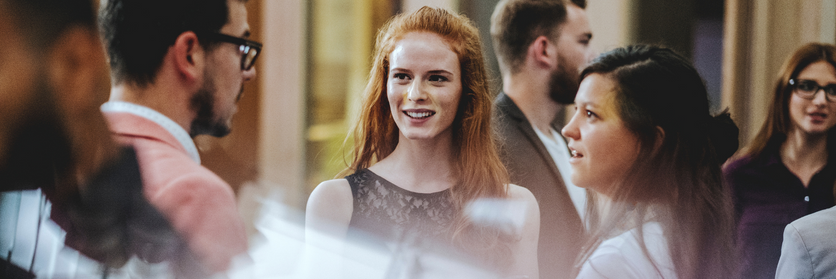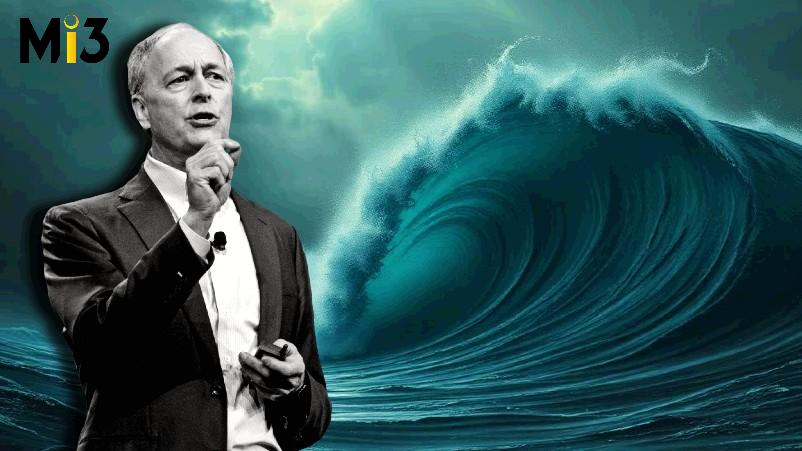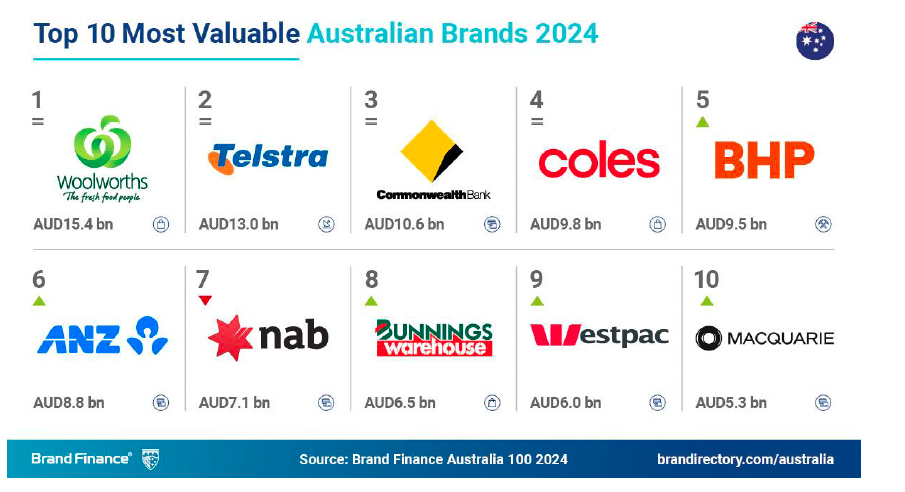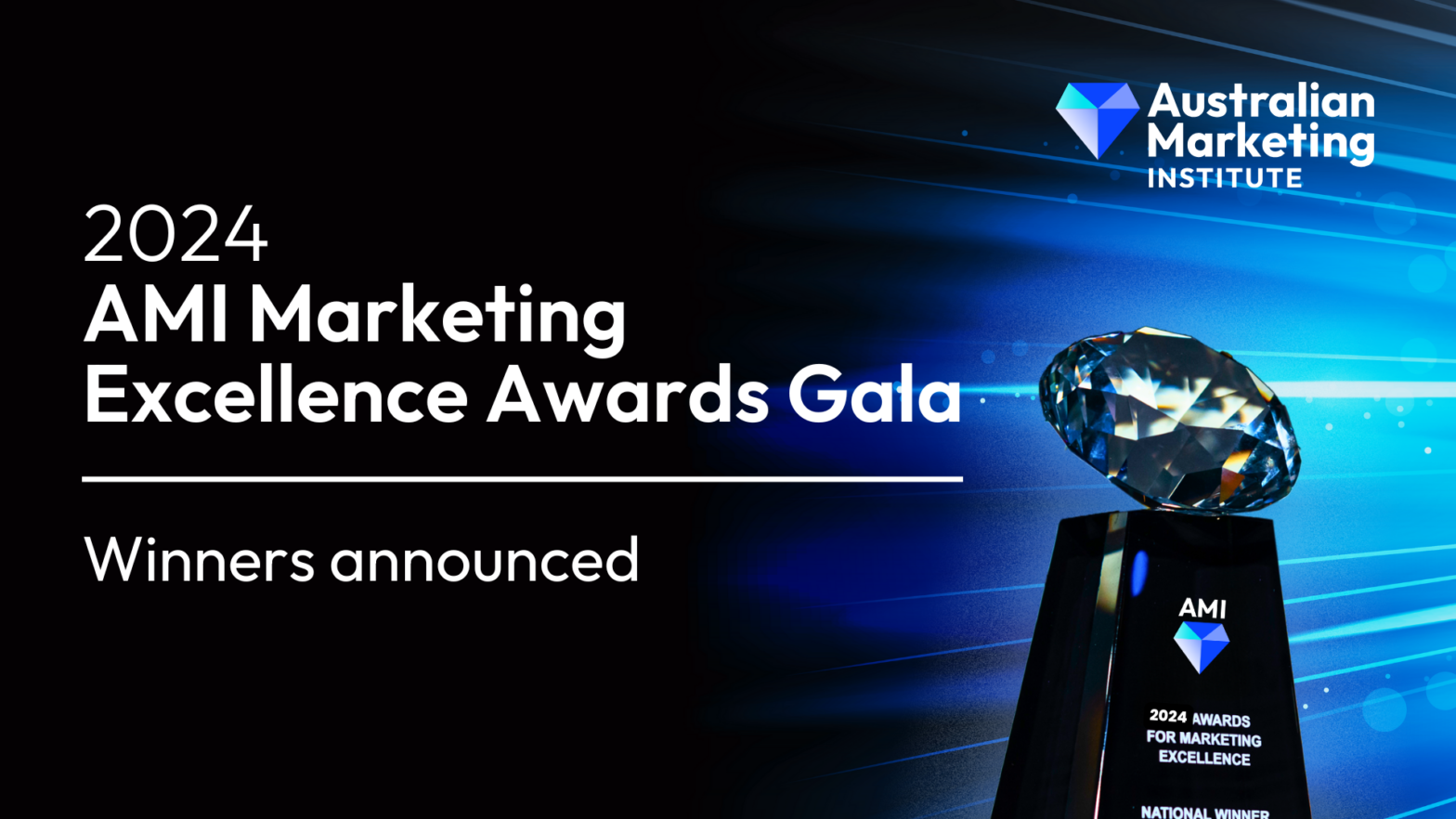Upfronts: What Mastercard, Mercedes, Harley Davidson, Guzman y Gomez and Coinbase don’t want other brands to know: 10-plus Australian independent publishers tapping deep niches, connection and know-how – but no indie agencies
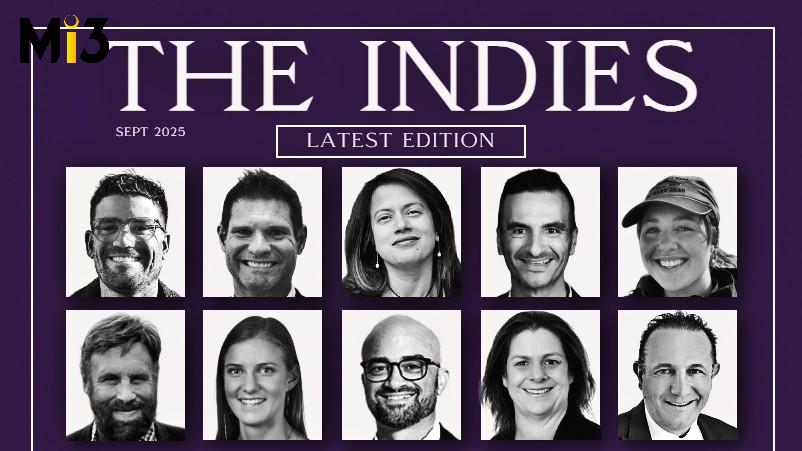
What you need to know:
- The Digital Publishers Alliance last week organised a series of round tables between brands, agencies and independent publishers that between them range from deep niches of a few hundred thousand to multimillion audience networks.
- Personal wealth, financial news, sports, adventure, community news, public sector niches and multicultural outlets are seemingly weathering the headwinds buffeting traditional publishers – almost all seemed upbeat.
- Perhaps because most of them are doing the vast bulk of their business direct with marketers that know them rather than agencies that don’t – understandably given it’s genuinely hard to be across multiple niches for multiple clients while managing the daily grind and hitting ever ambitious targets.
- Here’s a snapshot of independent publishers that may well be worth a punt, engaging with audiences across niches, platforms and formats through proximity, knowledge and storytelling rather than claiming a global algorithmic magic formula.
Who showed up
Brands and bodies:
Hawaii Tourism, Hong Kong Tourism Board, Tinder, Uber, Visit California, Brand USA, Hello Fresh, Mastercard.
Agencies, trade publishers, tech and service providers:
Initiative, UM, OMD, WPP Media, Wavemaker, Spark Foundry, Herd MSL, Gate 7, Passendo, Linkd Tourism, Paramount+, Mumbrella, Mi3.
Independent Publisher speed dates:
Ampco*, Auzbiz, Australian Traveller, Broadsheet Media, Conexus Financial, Equity Mates*, Halliday Wine Companion*, Her Canberra, Interplay Media, JSL Media*, Junkee Media, Kindrid, Limelight Arts Media*, Livewire*, Mamamia, Man of Many, Neos Kosmos*, Region Media*, Russh, SGC Media, Sitchu, Speedcafe*, Sporting News*, Squiz Media, Star Observer*, Time Out, We Are Explorers*
* Mi3’s speed dates

We are Explorers
A site dedicated to the great outdoors: “In the same way as you have a Broadsheet or a Concrete Playground for city culture, we’re doing the same for the outdoors,” says senior sales & partnerships manager, Julia Aebi.
“Everything from where to go, the national parks, the hikes, the camping spots, the four-wheel drive tracks, through to the gear that you take – and a lot of the kind of peripheral values pieces as well, in terms of sustainability and protecting the places that we adventure in.” (We are Explorers is a B Corp.)
Who’s consuming?
Everyone from “weekend warriors escaping the city – our biggest chunk are the 25-45 year-old urbanites and young families getting the hell out of dodge after working in the city during the week” – to empty nesters and “grey nomads getting out as much as they can, gearing up to do a lap, sinking all the money into the four-wheel drive …. So we get lots of frequency.”
What’s the reach?
“We get 350,000 uniques to the site a month, but we really excel in the engagement.We have 35,000 email subscribers, and we have 65-70 per cent average open rate at the moment.”
Audience growth strategy
“Creating really high quality, engaging content that people really want to dig into and read and watch and listen to. We have a big focus on original creator-generated content.” Mostly that comes from a network of around 40 of “content unicorns who can do everything under the sun – from Reels to writing to photography – but broadly we have about 400 people around the country [getting out and feeding content back in],” says Aebi.
“If you jump onto the site, jump onto our socials, you’ll see almost all of the content is from someone who’s out there on the trail or testing out the piece of gear on the road trip – and that’s how we make it happen. Because we’re a team of seven full time people at the moment – so it’s that big explorer network of creators [that’s driving growth].”
Who’s advertising?
“Our main verticals are travel and tourism, international through to state and local. Then outdoor gear – Patagonia, North Face and the like. We’re also doing more with automotive and drinks brands.”
Agencies versus direct:
“It’s mostly direct. We do work with agencies – we’ve just wrapped up a massive campaign with Jeep, that was managed almost entirely direct and then basically signed off by the agency. We have a few clients with that kind of set-up. We’re just about to launch a campaign with Mastercard which is also direct.”
What’s next?
“Refining what we do. With all the changes coming through – AI, search, all of that – what we’re finding is doubling down on what we do best tends to produce the best results. So human-led storytelling and focusing on our owned audience, doubling down on email and making sure we continue to produce really high quality content for the people who know and love us – and nurturing that audience. We are seeing some really awesome successes from leaning into our niche, but we’re also trying some fun stuff that’s out of scope – we ran a festival earlier this year. So there will always be an element of trying to push the bounds, but for the most part, just focusing on great storytelling.”

Speedcafe.com
“We’re the biggest motorsport news website in Australia, one of the biggest in the world,” claims editorial director Andrew van Leeuwen.
Who’s consuming?
Motorsports fans – most of them, by the looks of it, with Supercars is driving the bulk, followed by Formula 1. The audience split is circa 75 per cent male, but that has “definitely shifted” thanks to the Netflix-Formula 1 Drive to Survive series. “The female interest off the back of that is off the charts,” says van Leeuwen. Meanwhile, Kiwi Supercars champion Shane van Gisbergen moving to compete in the US Nascar series “has really put a lot of interest on our Nascar coverage, and we’re driving a lot of traffic through that”.
What’s the reach?
“1.8 million uniques in August.”
Who’s advertising?
The brands you’d expect: “Supercheap Auto, R&J Batteries, Pirtek, Mobil1, Michelin, Meguirs, AC Delco, Xpel paint protection and vehicle wraps – and most of our partners have been with us for many years,” per operations manager Steve Neumann. “The founder of speedcafe.com was previously in PR and marketing, so we know how to help them activate in motorsport – and that is why they come to us. We help them to get the value and the return from what they’re spending on the vinyl on the car [the expensive logo sponsorship].”
Any brands from outside of motorsport? “More and more so.”
Agencies versus direct:
“Almost 100 per cent direct.”

If you're Harley Davidson, for example, many people that buy Harley-Davidsons have a funny Greek name and they ride their bikes on a Sunday. Harley-Davidson has worked that out – and we are working with them … Mercedes-Benz is another.
Neoskosmos.com
Neo Kosmos is Australia’s largest Greek community outlet – reaching circa 500,000 in print and online to an audience spanning four generations. That’s a balancing act in terms of content production and delivery, per partnerships consultant, Theo Fotopoulos. “It gets complicated, but it means we can do segmentation.” He says big brands are realising that it works. “We’re very niche, but we can create a big opportunity out of that niche.”
Who’s consuming?
Four generations of Australian Greeks.
What’s the reach?
Circa 500,000, with 180,000 monthly uniques digitally.
Who’s advertising?
About a 50:50 split between local business and big brands, per Fotopoulos.
“I think we’ve got a tougher gig, in a way, because we get sort of pigeon-holed. Maybe sometimes people see multiculturalism as being too hard. Coming from a traditional marketing mindset. Do I go niche, or do I stay mass? Or can I do both? I think what we offer is very interesting customers. So if you’re Harley Davidson, for example, many people that buy Harley Davidsons have a funny Greek name and they ride their bikes on a Sunday.”
Has Harley Davidson worked that out?
“They have, and we’re working with them. Mercedes-Benz is another iconic brand that has worked out that they sell more cars to this particular cultural group than anyone else from their factory store. So there’s some really outstanding data like that, which make great case studies, and we’re much more agile than many mass media brands. So we can really build more of a specific feel to our content and our delivery.”
I think the agency side, discovering the quality of our audience probably has a lag to that of the investment professionals, because [agencies are] used to typical, standard publications, they're used to advertising on the AFR and just picking broad mass media.
Livewire Markets & Markets Index
Founded by Tom McKay and James Marlay in 2013 from an inner Sydney kitchen table, the platform claims an average monthly audience of a million, which the publisher claims is the largest investment-focused audience in Australia: “We’re competing with broadcast media,” per chief commercial officer, Adrian Cachia.
What it provides:
Investment insight, commentary and analysis from Australian money managers.
Who’s consuming?
“Basically, investors of all different kinds, from your average investor or individuals all the way through to professional and family office financial advisors. They come to our website to hear from the best investors in the country, So that is professional fund managers, investment portfolio managers.”
What’s the reach?
The publisher claims email open rates are averaging above 50 per cent across “a multitude of daily emails” with a “resurgence in email over the last 12 months”, according to product director, Lyndon Maher. They claim to reach “a million investors a month now” online and are pushing content to 150,000 email recipients, with the two sites notching average session times of circa five minutes.
Audience growth strategy:
Per Cachia, the reason the platform’s rapid audience growth and sticky engagement is the quality of insight being delivered.
“People don’t want to hear any Joe Bloggs’ opinion when it comes to investing, they want to hear from the best and those that have a lot of skin in the game.”
Revenue growth strategy
“We help brands reach really high quality audiences of investors – so B2B – for example, major fund managers, big banks, any of those marketing teams trying to get in front of people for either retail savings products, investing products, trading products, or funds management.
“But they [our audience] are also people too. So they’re interested in where to invest next and learning about it, but more broadly, they’re typically wealthier, they’re quite diversified both in how they invest and their interests, and so they’re a pool for potentially luxury brands [to tap].”
Direct vs agencies
“On the content side, direct is the core, because we work with those fund managers who are producing that content,” per Cachia. “We work directly with CommSec, ASX, CMC Markets and the bigger brands – the likes of NAB, Westpac – though typically if it’s for advertising [versus content] those big brands will work though an agency.
“I think the agency side, discovering the quality of our audience probably has a lag to that of the investment professionals, because [agencies are] used to typical, standard publications, they’re used to advertising on the AFR and just picking that broad mass media.
“But they are starting to discover these new pools of investors – and our biggest point of difference is not just the size of the audience, but it’s how well everything engages.”
JSL Media
Canberra-based JSL publishes Inside Local Government, Inside State Government and Inside Government New Zealand.
Who’s consuming?
“We are actually the largest digital news site for the public sector Australia and New Zealand. So local and state – not federal at this stage in Australia – and all of New Zealand government. We run a daily news site which is read exclusively by those people,” per national sales manager Arthur Sarlas. “The content is not something you or I would necessarily be interested in. It’s very much internal.”
What’s the reach?
State Government is 25,000 subscribers; Local Government is just on 12,000. So it’s very niche, but it’s very, very highly targeted as well.”
Who’s advertising?
“Our clients are anyone who wants to reach government at any of these levels, whether it’s an events company, whether it’s a software company.
“Fleet, for example, is a very big part of government, so we work with Toyota and Kia and big businesses like that.
“Our biggest growth this year has actually been through software. There’s so many companies lining up to try and get a government contract, whether it’s to change their payroll software, their management software. If you win a government contract, it’s a millions of dollars piece of business. So we are one of the vehicles that they go through.”
Revenue growth strategy:
“Most of our revenue comes from email marketing – EDMs that go straight to decision-makers in government.”
“But content has grown a lot the last year as well. A lot of people want to be less transactional, a little bit more informative and educational about what they do. But the big thing for me, and I come from a background of working for Nine and Seven and a lot of big media, this is so niche, and I thought it was going to be the most boring gig of my life. But then you start realising how many people are trying to attract this little audience, and how hard they are to actually find, then it kind of gets interesting.”
Direct versus agencies:
“Mostly direct.”
Is it a hard sell to convince advertisers to do something different?
“At an agency level yes. At a direct level, no. At an agency level, it’s more about just trying to get them to think not about the massive numbers, but about the quality of who you’re reaching. We get about 30 per cent of our clients from ad agencies, but 70 per cent is direct.”

Zero Digital Sports
Melbourne-based Zero Digital Sports is “the biggest independent sports publisher in Australia”, claims Patrick McDonald, sales boss at its sales arm, Interplay Media.
Who’s consuming?
Sports fans. Lots of them: Zero Tackle focuses on NRL, Zero Hangar covers AFL.
What’s the reach?
Combined they’re hitting circa “2.5 million Australian footy and rugby league fans monthly”. McDonald says its “got the numbers online to compete with the Fox Sports of the world” and it’s gained traction because many fans are fed up with some of the sports coverage by mainstream mastheads and publishers, “which can be negative, tabloidy and talking the game down”.
But it’s losing out to rights holders on video. “We don’t have the broadcast element, and that is where a lot of the money is going – so 2026 for us is all about video, and we’ve got a bunch of ex-players that we’re now doing a pipeline of stuff with on that front,” per McDonald.
Who’s advertising?
Advertisers include the likes of sports footwear brand Asics, as well as Pointsbet and TAB, plus platforms like Coinbase. “Bookmakers are an obvious one for sport, and we work closely with a number of those brands who are helping to fund that growth around video.”
Direct versus agency business?
“I’d say 50:50.”
How’s the market?
While pre- and post-election was tight, “because much of the ad spend siphons into broadcasters,” McDonald says the market “is now picking up”.

Equity Mates Media
Founded eight years ago by two mates then in their early twenties – Alec Renehan and Bryce Leske – Equity Mates is essentially investing for everyone, demystified. It’s now notching big reach and engagement through a podcast first, then socials and email strategy.
Who’s consuming?
Anyone interested in investing, but mainly younger people. “Our audience is largely millennial: 18-44 is our largest bracket, about 79 per cent of our audience is there,” per senior BDM Olivia Trotter.
What’s the reach?
“We reach just over 750,000 Australians a month across all our channels. So that’s across podcast, YouTube, socials, newsletter. We cover news and markets. We speak to experts in the industry, financial advisors on anything and everything about budgeting, finance, investing and superannuation.”
But there’s a growing B2B element.
“We started out appealing to retail investors but we have grown quite a significant portion within industry as well – about 10 per cent of our audience is in banking and finance. Within that, we’ve got financial advisors, fund managers, research etcetera.”
Who’s advertising?
“We work with a lot of fund managers – superannuation funds and retail banking,” says Trotter. But it’s also getting traction with broader consumer brands: “Anyone who’s coming to our content wanting to learn how to build wealth has got that aspirational mindset. So we work with a lot of brands and target that [largely millennial] community. We just finished up a large campaign with Guzman y Gomez; we’ve got a current campaign for Vanguard Super that’s live at the moment, and similarly Good Day vitamins.”
Audience growth strategy
“Discoverability in podcast is challenging!”
That said, founders Renehan and Leske “have organically grown a big following over the last eight years and are doing okay”, with circa 25 million podcast downloads across the network to date. Olivia says Equity Mates Investing is “one of the top finance podcasts in Australia – if not the top … it is regularly in the top charts.” Hence an ongoing deal with A-Cast.
Equity Mates could probably do more with its website. For now, it’s leaning more on podcasts, then pushing out to socials and its daily newsletters, with circa 59,000 email subscribers across the network, and a claimed 300,000 monthly podcast listeners. It also does live events.
Direct versus agency business?
“We work directly a lot with brands. Within finance and adjacent markets, the marketers that are familiar with us or listen to us already is usually the best way in – they’re familiar with the content and the vibe and we have a lot of recurring business through that avenue. Equally, we’re always looking for new ways to connect.”
How’s the market?
“It’s been all right this year. For consumer [publishing] it’s been a little more challenging, But we’ve had a strong year.”
Why launch a print title now? A) No one else is doing it. B) Doctors trust the AMA and therefore trust us. C) Pretending doctors are just doctors and not humans is foolhardy.
AMPCo – Medical Journal of Australia and The Practitioner
The Australian Medical Association has published the Medical Journal of Australia since 1914. Next year it’s stepping up its publishing and advertising ambition with The Practitioner.
Who’s consuming?
It’s aiming to reach all doctors in Australia quarterly and from 2027, bi-monthly – targeting lifestyle advertisers seeking relatively high earners that like golf, wine, wealth management and holidays, and practitioners earning between $250k-$500k that trust the AMA to deliver quality, per CEO Delores d’Costa.
“We cater to them and hey trust us, because we’re owned by the Australian Medical Association,” said D’Costa. “We get open rates on our emails of about 42 per cent and we get open rates on our publications of 50 to 60 per cent. We know doctors, so we will advise clients ‘This will work. This won’t work’.
What’s the reach?
“We have a database of 100,000 doctors, which is all of the doctors public practicing in Australia. We are up to date on who’s practicing and who’s not practicing. We also have their personal email addresses for 60,000 doctors, which is rarer than hen’s teeth.”
“We have their permissions, which is really important from a data perspective,” says National BDM, Prue Herman. “We have an Australian-based data integrity team which can update that every day – because doctors can be nomadic, they might pick a surgery for a few hours.”
Who’s advertising:
For The Journal, it’s largely “pharma and finance,” per D’Costa. “We also have medical tech, medical indemnity insurance companies, etcetera.” For The Practitioner that will branch out. D’Costa is targeting “superannuation, financial boutique companies that will assist doctors grow their wealth – because doctors are very financially-focused. We also want to cover the doctors’ hobbies, which tends to be golf, tends to be holidays. They like to have their holiday time with the conference season overseas, and they are quite heavily into wine and golf. So we definitely want to target the lifestyle stuff, including automotive – the full spectrum of what a [relatively wealthy] human being needs, doctor or otherwise”.
Why launch a print title now?
“A) No one else is doing it. B) Doctors trust the AMA and therefore trust us. C) Pretending doctors are just doctors and not humans is foolhardy.”
There’s a double-edged sword in that everyone thinks, ‘oh, we need to advertise during the pride season’. But our audience is here all the time. The other double edged sword is reactionary American politics. Two American corporations you may have heard of cancelled their sponsorship of Mardi Gras. Those companies are called Google and Meta.
The Star Observer
Australia’s longest running and widest read LGBT publication.
Who’s consuming?
Mainly LGBT people, and lots of them. “A good old fashioned monthly print magazine distributed in Sydney Melbourne and Brisbane. It’s been going since 1979 and is basically one of the world’s oldest legacy LGBT publications, one of the 50 largest LGBT sites in the world and the largest LGBT site in Australia in terms of reach,” per publisher Lawrence Gibbons.
What’s the reach?
“Cumulatively about 1.5 million and the audience is Sydney, followed by Melbourne, followed by Brisbane.”
Who’s advertising?
Lots of big international and local brands. But it tends to be squeezed into a few weeks of the year.
“One of the challenges for our market is that a lot of brands come in around Mardi Gras – and there’s a double-edged sword in that everyone thinks, ‘oh, we need to advertise during the pride season’. So we get a fair amount of corporate support during Mardi Gras, and the Melbourne equivalent called Midsummer. Our challenge is to educate the market that we’re always here and the audience is always here, and that you’re going to be less likely to get lost [in the three-week pride bonanza].”
How’s the market?
A little lumpy.
“The other double-edged sword is in the reactionary world of American politics, where a lot of these big brands are now just scared.”
Has that corporate DEI pullback had an impact locally?
“Not directly, but a lot of brands are American-owned. I’ll give you an example: Two American corporations you may have heard of cancelled their sponsorship of Mardi Gras. Those companies are called Google and Meta. So that gives you an idea.”

Sporting News
A major aggregated sports network spun out of DAZN a few years back.
Who’s consuming?
Sports fans, millions of them, across NRL, AFL, Cricket, NBA, football and motorsports.
What’s the reach?
Globally 50m-plus monthly uniques. Locally “about 3.5 million uniques,” per MD Wade Maris.
Who’s advertising?
A lot of the codes are selling their game and league passes via the site. There’s also sports wagering firms – and a lot of longtail via programmatic display and native formats.
Agencies versus direct?
“Probably about 60:40 [direct to agency]”.
How’s the market?
Lots of change going on with sports rights ownership, and likely some impact of gambling ads regulation.
What’s next?
Potentially an acquisition of another Australian sports title in the near future, pushing into more memberships and rewards, more creator partnerships, more sports experiences. “Our investors are putting in money to allow us to evolve in a world that is very much becoming… Google, Amazon… [platform-owned].”
The likes of OMD and UM have the government accounts, so we are working with both sides, the agencies and the departments, saying ‘to talk to the audience, this is the best way to do it’.
Region Media
Headquartered in Canberra Region media has a team of circa 30 journalists and editors covering “hyper local community-based stories across Canberra, Illawarra, Riverina and the south coast down to the Snowies,” per sales director Kirsty Tomas. “We have journalists based in every location.”
The firm also publishes PS News, focused on public sector and defence, and ”a tiny print title, The Cape York Weekly, distributed for free to remote indigenous communities.”
The group also operates 42 social properties – from Woollongong Mums to MyWagga, to Canberra Day Trips.
Who’s consuming?
For the local news sites, everyone interested in what’s happening in their part of the world, per Tomas. PS News is specifically public sector workers.
What’s the reach?
“Three million,” according to Tomas. Which breaks down as 1.1 million monthly uniques on the regional sites, and the remainder made up from its social properties. PS News reaches a “double opted in audience of 90,000.”
Who’s advertising?
Local and increasingly national advertisers, says Tomas – and it can syndicate content across the portfolio for brands looking to tap different regions.
Agencies versus direct?
Largely direct partnerships with local business, though “we’re starting to look at playing a bit more in that agency space,” says Tomas. “The likes of OMD and UM have the government accounts, so we are working with both sides, the agencies and the departments, saying ‘to talk to the audience, this is the best way to do it’.
At the DPA Independents Day, Tomas was pushing the need to build brand awareness to both agencies and the brands present. “If you want to connect with those people in the regions … what is your organisation doing in those regions, what is your brand giving back? … Some clients will direct the agencies to put some content dollars in that way.”

Halliday Wine Companion
An expert wine guide, subscription service club, awards, experiences curator, online learning provider and wine bible publisher founded by writer, critic and winemaker James Halliday.
Who’s consuming?
Lots of people who like wine, spirits and quality drinks. They’re generally consuming the good stuff. Plus a strong B2B audience across retail and distribution.
What’s the reach?
General manager Shana Rohn didn’t have latest website uniques to hand, but said EDMs go out to circa 90,000, with open rates north of 50 per cent. “We have crazy engagement, serious brand loyalty.”
Who’s advertising?
“Tourism boards, tourism clients, credit cards – anyone that’s wanting to connect with a really high end, premium, elevated audience,” per Rohn. “We integrate commercial clients into advertorial, we have advertising opportunities across our website, magazine, book, and then for more integrated campaigns, we can package experiential services. American Express is a good example of that. We’ve created luxury experiences for their black card holders and then wrapped that with advertising campaigns.
“Another good example is Ponant cruises. We integrate them into our awards and they host high-end clients.
“We’ve also worked with Melbourne and Olympic Park to craft their wine list and packages using our IP … then we ran a dinner with them and some of their VIP clients to talk through the wine from the Victorian regions.”
Direct versus agency business
Both – “and we love agencies, especially our indie agencies, because they just get it and they get us, because we really do specialise in bespoke sponsorship creation.”
But Halliday also writes a lot of direct business in the traditional sense, through memberships, subscriptions, courses and guides sales, which make up the bulk of the business. “We are definitely diversifying. In terms of commercial revenue [from ads sponsorships and experiential], it’s about 30-40 per cent of our revenue.”
How’s the market?
“Green shoots. It’s definitely picking up.”

Limelight Arts Media
Turning 50 next year, Limelight is pretty much “the only publisher left in market covering the performing arts,” per managing editor Cara Anderson.
Who’s reading?
People who appreciate culture and the arts. It tends to skew older. “We’re probably the largest reviewer of live performance in Australia. We probably do about 60 live performance reviews a month, and they are free. So our news and reviews are free for readers, anyone can read them, and then our print product goes online and that is payable.”
What’s the reach?
Circa 60,000 monthly uniques.
Who’s advertising?
“Mostly arts companies. At the top end, the major performing arts companies – so the orchestras, the operas, if there’s international productions or artists coming in [to Australia] they’ll come because the people that are going to those shows are reading us.
“Because we are quite niche, we do also get luxury advertisers, like Rolex.”
The pitch: “We can provide a customised solution to a high influence demographic.”
Agencies versus direct?
Both – out of necessity. “Most of our agency side is either niche agencies who are in our market, or bigger clients pushing us into the bigger agencies … New agency business can be hard.”
How’s the market?
Not bad – because most of the mastheads have pulled back on the arts and reviews. As such “we’ve had a niche lift … so we are sustaining a good business model.”

